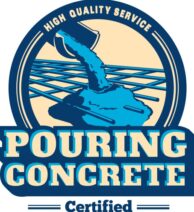Commercial Concrete Pouring

Every concrete placement is unique. Every customer has different needs, and each property’s location requires its own planning. And we enjoy the variety! But we still follow the same general procedures each time we handle a concrete installation whether it’s a residential or commercial concrete project.
When you contact us with interest in our concrete pouring services, we’ll schedule a free,-no-obligation consultation with you on your property. We’ll discuss your desires, tell you what we can do and answer your questions. If you decide to hire us as your concrete contractor, we’ll provide you with a contract stating the specifics of the work we promise to do. And then, the real work begins!
1. Site Preparation
Our first job on any site is to clear it and clean it, and often this requires earth-moving equipment. Any grass, trees, old concrete, or anything else will need to be removed so we can work on the raw earth. After clearing and marking the exact dimensions for the concrete, we’ll lay a granular sub base over the entire area. The sub base is then compacted to prepare it for the concrete.
2. Setting Concrete Forms
Our next step is setting concrete forms. Forms are set along the edge of the entire concrete area, and they’re held in place with wood or metal stakes. Both stakes and forms are designed for easy removal once the concrete has cured.
3. Pouring the Concrete
When the final forms are in place, it’s time to install the concrete. We may be able to pull our ready mix concrete truck up to the site and pour directly into the forms. If this is not possible, we use our concrete pump to get the concrete exactly where it needs to go. Our crew will smooth and move the concrete as it is being poured to prevent air pockets and ensure an even surface.
4. Pre-Finish
Next we level the top of the concrete and make the edges look uniform. We screed the surface, which means slowly pushing a large board across it to compact the concrete. Then hand held trowels called floats are used to even out smaller areas and edges. Depending on the finish the concrete will receive, we might perform an additional steel trowel finish to create a hard, smooth surface.
5. Finish
Now that we’ve prepared the surface, we can apply finish to the concrete. Our customers choose a multitude of finishes including stamped, and textured, and smooth trowel.
6. Curing
At this point, the concrete can rest and start the curing process. We do recommend a curing compound be applied immediately after the finish as it helps the concrete cure evenly and reduces cracks. Either way, the entire curing process lasts 28 days, but the first week is the most critical. You’ll
